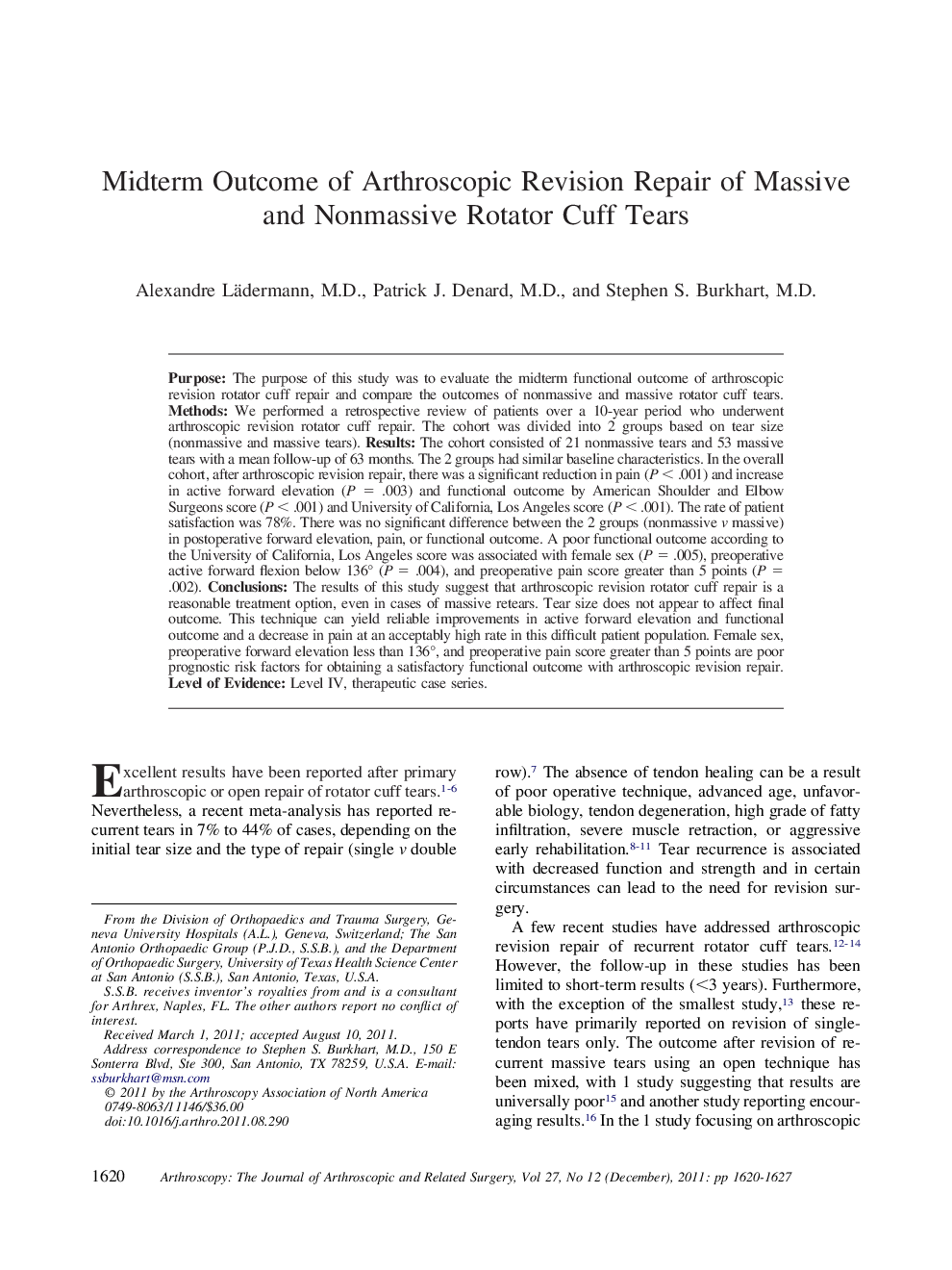| Article ID | Journal | Published Year | Pages | File Type |
|---|---|---|---|---|
| 4044953 | Arthroscopy: The Journal of Arthroscopic & Related Surgery | 2011 | 8 Pages |
PurposeThe purpose of this study was to evaluate the midterm functional outcome of arthroscopic revision rotator cuff repair and compare the outcomes of nonmassive and massive rotator cuff tears.MethodsWe performed a retrospective review of patients over a 10-year period who underwent arthroscopic revision rotator cuff repair. The cohort was divided into 2 groups based on tear size (nonmassive and massive tears).ResultsThe cohort consisted of 21 nonmassive tears and 53 massive tears with a mean follow-up of 63 months. The 2 groups had similar baseline characteristics. In the overall cohort, after arthroscopic revision repair, there was a significant reduction in pain (P < .001) and increase in active forward elevation (P = .003) and functional outcome by American Shoulder and Elbow Surgeons score (P < .001) and University of California, Los Angeles score (P < .001). The rate of patient satisfaction was 78%. There was no significant difference between the 2 groups (nonmassive v massive) in postoperative forward elevation, pain, or functional outcome. A poor functional outcome according to the University of California, Los Angeles score was associated with female sex (P = .005), preoperative active forward flexion below 136° (P = .004), and preoperative pain score greater than 5 points (P = .002).ConclusionsThe results of this study suggest that arthroscopic revision rotator cuff repair is a reasonable treatment option, even in cases of massive retears. Tear size does not appear to affect final outcome. This technique can yield reliable improvements in active forward elevation and functional outcome and a decrease in pain at an acceptably high rate in this difficult patient population. Female sex, preoperative forward elevation less than 136°, and preoperative pain score greater than 5 points are poor prognostic risk factors for obtaining a satisfactory functional outcome with arthroscopic revision repair.Level of EvidenceLevel IV, therapeutic case series.
